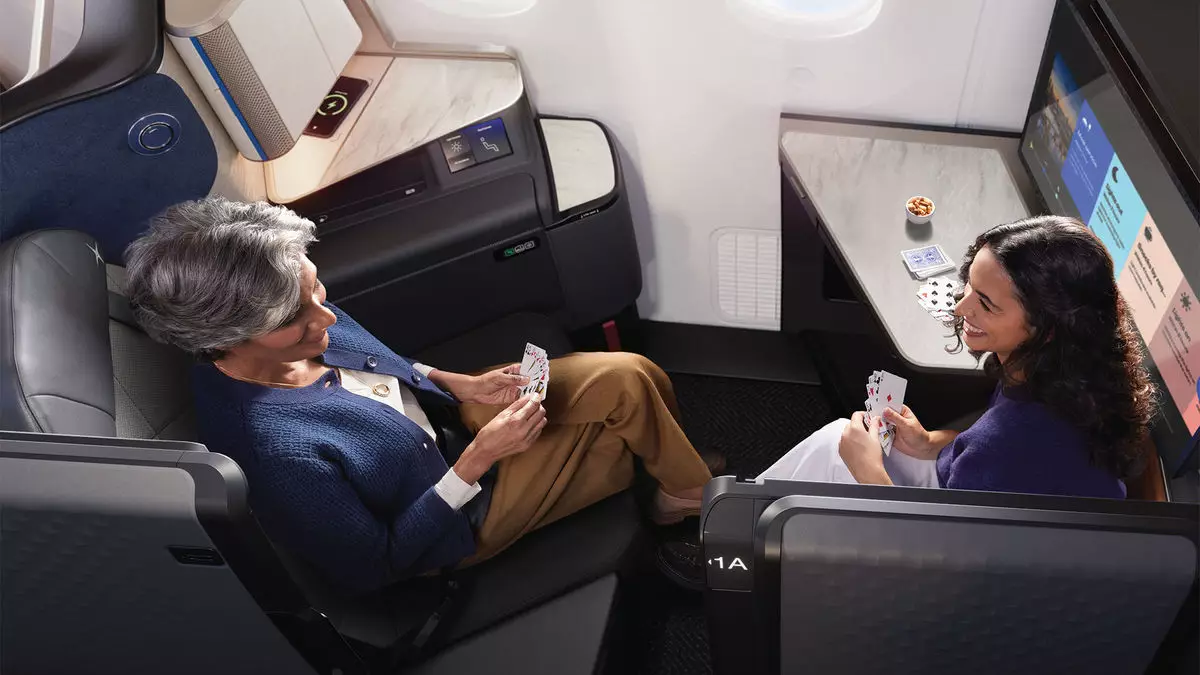United Airlines is embarking on an ambitious journey to transform the air travel landscape with its upcoming rollout of the 787-9 Dreamliner. Unlike traditional configurations that heavily favor economy seating, United is shifting its focus towards a more lavish offering, highlighting a significant innovation in luxury air travel. The introduction of the United Polaris Studio marks a crucial turning point, allowing the airline to cater to a growing demographic of travelers seeking elevated experiences on long-haul flights.
Pioneering Spaciousness and Comfort
The Polaris Studio is set to be 25% larger than standard Polaris seats, boasting unique features such as an additional ottoman designed for companion use and fully privacy doors that enhance the overall flying experience. The added benefit of a 27-inch entertainment screen elevates in-flight entertainment for business class travelers, ensuring they have a comfortable environment conducive to work or relaxation. Alongside the premium features, United plans to introduce amenities like caviar service and luxury skincare offerings that will undoubtedly appeal to discerning passengers.
This forward-thinking approach not only amplifies comfort but also positions United as a serious competitor in the market for premium air travel. By offering only eight Studio seats in the front row, the airline emphasizes exclusivity, which can significantly enhance the perceived value of its services.
A Strategic Shift in Seating Ratios
In an era where profitability is paramount, United’s decision to allocate more aircraft space to premium seats comes as a strategic response to market demands. The new configuration will showcase 56 standard Polaris business-class suites, alongside 35 premium-economy and 33 Economy Plus seats, while drastically reducing the economy sector to a mere 90 seats. This deliberate choice reflects a growing trend observed in the industry, where airlines like American are similarly upgrading their offerings to prioritize higher-yielding seats amid a backdrop of sluggish demand for coach class.
By focusing on premium seating, United taps into the lucrative market segment that is increasingly willing to spend more on travel experiences that promise comfort and exclusivity. The move benefits the airline financially, allowing improved profit margins at a time when the balance between operational costs and passenger satisfaction is more critical than ever.
Challenges Amidst Innovation
Offsetting these advancements, however, are the challenges that United faces from its own workforce. The recent announcement of the aircraft’s enhanced configuration sparked criticism from the Association of Flight Attendants-CWA, signaling underlying tensions between management and staff. The union argues that while upgraded cabin interiors benefit customer service, they could potentially overshadow ongoing contract negotiations that center around employee welfare.
This pushback underscores the importance of considering employee input in the quest for innovation within the airline industry. Ensuring that the front-line workers feel valued and included in such upgrades is essential not only for operational effectiveness but also for maintaining morale among staff who are vital to delivering a world-class customer experience.
As United Airlines delves deeper into this new era of air travel, it will face the dual challenge of elevating its service offering while ensuring the voice of its employees contributes to a holistic approach to innovation.


Napsat komentář